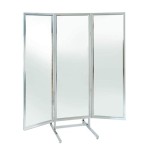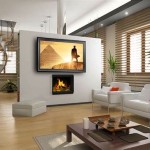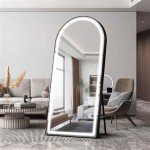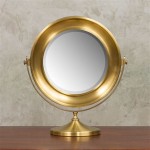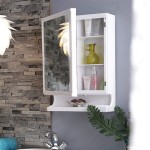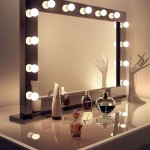Make a Full-Length Mirror
A full-length mirror is a versatile item, useful for checking appearance, enhancing interior design, and even brightening a room. Creating one can be a rewarding DIY project, offering customization options not always available in store-bought mirrors. This article will guide you through the process of making your own full-length mirror, covering material selection, construction techniques, and finishing touches.
Selecting the Right Mirror
The foundation of any full-length mirror is, of course, the mirror itself. Various types and sizes are available, allowing for customization based on individual needs and preferences. Standard sizes typically range from around 5 to 6 feet tall and 2 to 3 feet wide. Choosing the correct dimensions is crucial to ensure the mirror serves its purpose effectively. Consider the available space and the intended use when determining the appropriate size.
Beyond size, the type of mirror glass also plays a significant role. Standard glass mirrors offer a clear reflection but are more susceptible to shattering upon impact. Safety-backed mirrors, constructed with a backing that holds the glass together if broken, are a safer option, especially in households with children or pets. Acrylic mirrors are lightweight and shatter-resistant, making them easier to handle and mount, but they may scratch more easily than glass.
Choosing the Frame Material
The frame provides structural support for the mirror and significantly impacts its aesthetic appeal. Wood is a popular choice, offering a classic look and the flexibility to be stained or painted to match existing decor. Metal frames, such as aluminum or steel, provide a modern, sleek appearance and are highly durable. Repurposed materials, like old window frames or reclaimed wood, offer a unique, eco-friendly option.
When selecting the frame material, consider its weight, durability, and how it complements the surrounding environment. The chosen material should be strong enough to support the weight of the mirror and withstand regular use. The frame's style should harmonize with the overall aesthetic of the room where the mirror will be placed.
Building the Frame
Once the mirror and frame materials are selected, the construction process can begin. Accurate measurements are crucial for a well-fitting frame. Carefully measure the mirror's dimensions and cut the frame material accordingly. For wooden frames, miter joints are commonly used to create clean, professional corners. Metal frames might require welding or specialized connectors.
Assemble the frame using appropriate fasteners, such as wood screws, nails, or metal brackets, ensuring the joints are secure and stable. Regularly check for squareness during assembly to prevent a warped frame. This is crucial for ensuring the mirror fits correctly and the finished product looks professional.
Mounting the Mirror
Securing the mirror within the frame is a critical step. Mirror adhesive, specifically designed for this purpose, is a reliable option. Apply the adhesive evenly to the back of the frame and carefully place the mirror on top, ensuring it is centered and aligned. Alternatively, mirror clips can be used to hold the mirror in place. These clips are typically screwed into the frame, providing a mechanical grip on the mirror's edges.
Adding Finishing Touches
With the mirror securely mounted, the final stage involves adding finishing touches to enhance its appearance and protect the frame. Wood frames can be stained, painted, or varnished to achieve the desired look and protect the wood from moisture and damage. Metal frames may benefit from a protective coating to prevent rust or corrosion.
Consider adding decorative elements such as molding, trim, or even mosaic tiles to personalize the mirror and make it a unique piece. These final touches can elevate the mirror from a functional object to a decorative element that enhances the overall aesthetic of the room.
Mounting the Finished Mirror
The final step is mounting the finished mirror. For smaller, lighter mirrors, hanging hardware, such as D-rings or wire, can be attached to the back of the frame. Heavier mirrors might require more robust mounting solutions, like French cleats or wall anchors. Ensure the chosen mounting method is appropriate for the mirror's weight and the wall's construction. Always follow the manufacturer's instructions for the specific mounting hardware used.
Consider the location of the mirror and its intended use when choosing the mounting height. Ensure the mirror is positioned at a height that allows individuals to comfortably use it. Safety should also be a primary concern, especially with heavier mirrors. Ensure the mirror is securely mounted to prevent accidents.

Diy Full Length Mirror Shanty 2 Chic

Diy Full Length Mirror With Tiles

How To Update A Boring Full Length Mirror For Free

Superb Ideas To Install Full Length Mirror For Home Décor That Will Show Enlarged Space

How To Make Your Own Mirror A Rustic Diy Project Ideas For The Home

Beautypeak 71 X 30 Full Length Floor Mirror Wavy Leaning Or Hanging Without Stand White Com

Large Over The Door Mirror Wardrobe Wall Make Up Full Length Hanging

Neutype Full Length Mirror Decor Wall Mounted Floor Dressing Make Up For Bathroom Bedroom Living Room Dining Entry Black 63 X 18 Com

Diy Wood Floor Mirror Grace Oaks Designs

Livingandhome Wall Mounted Rectangular Framed Full Length Mirror 280 X 1180 Mm Diy At B Q

